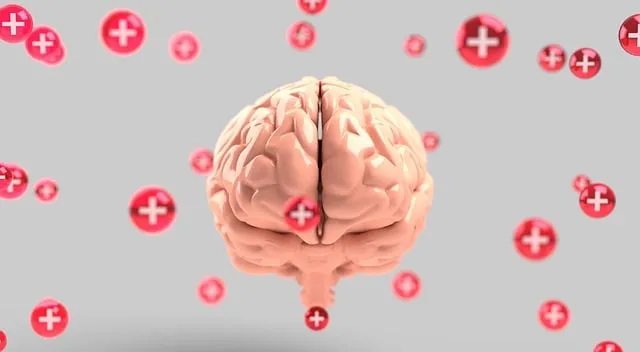Community outreach programs in Longmont, where Kaiser provides inpatient mental health services, are vital for improving individual well-being and creating inclusive environments that support mental wellness, especially for underserved populations. These tailored initiatives empower residents with coping skills and self-care routines, fostering resilience and enhancing the collective mental health of the community. By breaking down barriers and leveraging partnerships, Kaiser's strategic approach ensures diverse backgrounds have access to essential resources, contributing to a more resilient Longmont. Measuring success involves holistic assessments, community engagement, and long-term support, demonstrating the positive impact on local well-being, particularly regarding Kaiser's inpatient mental health services in Longmont.
Community outreach programs, like those seen in Longmont where Kaiser offers inpatient mental health services, play a pivotal role in enhancing access to care. This article delves into the significance of such initiatives, exploring their impact on mental health support within communities. We’ll examine Longmont’s successful model and provide a step-by-step guide for implementation. Additionally, we’ll discuss how to measure success and engagement, highlighting best practices for community outreach in mental health.
Key terms: Community outreach programs, mental health initiatives, Longmont, Kaiser inpatient services.
- Understanding Community Outreach Programs: Their Role and Impact
- Longmont's Mental Health Initiatives: Kaiser's Inpatient Services
- Implementing Effective Outreach Strategies: Step-by-Step Guide
- Measuring Success and Community Engagement in Mental Health Programs
Understanding Community Outreach Programs: Their Role and Impact

Community outreach programs play a pivotal role in fostering connections and enhancing the well-being of individuals within various communities, including Longmont where Kaiser possesses inpatient mental health facilities. These initiatives are designed to address unique local needs, promoting inclusive environments that support mental wellness. By reaching out to underserved populations, such as those struggling with mental health challenges, outreach programs offer a lifeline for many. They provide essential resources and services, facilitating access to coping skills development and mind over matter principles that empower individuals to navigate life’s complexities.
Through strategic partnerships and tailored programming, these initiatives facilitate the growth of mental wellness coaching programs development. By empowering community members with knowledge and tools for managing stress, overcoming adversity, and improving overall mental health, outreach programs contribute to a more resilient and thriving Longmont. This holistic approach ensures that individuals from diverse backgrounds can access support, ultimately enhancing the community’s collective mental health and resilience.
Longmont's Mental Health Initiatives: Kaiser's Inpatient Services

In Longmont, Kaiser’s inpatient mental health services play a pivotal role in the community’s holistic approach to well-being. These programs are designed to cater to individuals struggling with severe mental health challenges, offering a safe and specialized environment for recovery. Beyond traditional therapy, Kaiser focuses on empowering patients through self-care routine development, enabling them to manage their conditions effectively. The initiatives also emphasize coping skills development and social skills training, fostering an inclusive atmosphere that encourages long-term mental health resilience.
By integrating these innovative practices, Longmont’s Mental Health Initiatives at Kaiser aim to break down barriers and provide comprehensive support. This strategic approach not only treats immediate symptoms but also equips individuals with the tools needed to navigate life’s challenges, ultimately enhancing their overall quality of life.
Implementing Effective Outreach Strategies: Step-by-Step Guide

Implementing effective outreach strategies is a key aspect of any successful Community Outreach Program Implementation, especially when addressing mental health concerns in urban areas like Longmont where Kaiser may or may not have inpatient services. Here’s a step-by-step guide to enhance your efforts:
1. Identify Target Communities: Start by understanding the demographics and specific needs of the communities you aim to reach. This could involve conducting surveys, analyzing existing data, or partnering with local organizations familiar with the area. In Longmont, for instance, focusing on areas with limited access to mental health resources might be a strategic move.
2. Tailor Programs to Needs: Based on your research, design programs that directly address identified issues. Incorporate activities like Mindfulness Meditation sessions to reduce stress and promote calmness, or Resilience Building workshops to empower individuals facing challenges. These initiatives can make a significant impact in communities where mental health support might be limited.
3. Build Partnerships: Collaborating with local schools, community centers, and faith-based organizations is crucial for wider reach and acceptance. These partnerships can help in hosting events, sharing resources, and ensuring your programs resonate with diverse populations, including those who may not typically access inpatient services like those offered by Kaiser.
4. Utilize Local Resources: Leverage existing infrastructure and professionals within the community. Encourage local mental health practitioners to volunteer their time or offer discounted services. Utilizing these resources ensures sustainability and fosters a sense of ownership among participants.
5. Communicate Effectively: Clear communication is vital. Ensure your outreach materials, events, and programs are well-advertised through multiple channels. Utilize social media, community newsletters, and word-of-mouth to spread awareness about the availability of mental health support and resources, especially highlighting Kaiser’s services or lack thereof in the Longmont area.
Measuring Success and Community Engagement in Mental Health Programs

Measuring success and community engagement in mental health programs is a critical aspect of understanding their impact and effectiveness, especially in initiatives like Longmont does Kaiser have inpatient mental health services. The key to gauging success lies not only in clinical outcomes but also in community satisfaction and participation. By actively involving the community in these programs, such as through Trauma Support Services or Emotional Healing Processes, organizations can ensure that interventions are culturally sensitive and tailored to local needs.
Community engagement strategies should aim to foster open dialogue, gather feedback, and promote long-term support for mental health initiatives. Incorporating Stress Reduction Methods within these programs can further enhance their appeal and utility. Regular assessments, both quantitative and qualitative, allow for the tracking of progress, identification of areas for improvement, and demonstration of how such services contribute to overall community well-being.
Longmont’s mental health initiatives, highlighted by Kaiser’s inpatient services, demonstrate the power of community outreach programs. By understanding their role and implementing effective strategies, as outlined in this guide, organizations like Kaiser can significantly impact community engagement. Measuring success through various metrics ensures these programs remain tailored to the needs of folks in Longmont and similar communities, fostering a healthier and more connected society. When executed properly, community outreach can revolutionize mental health support, ensuring no one is left behind.






